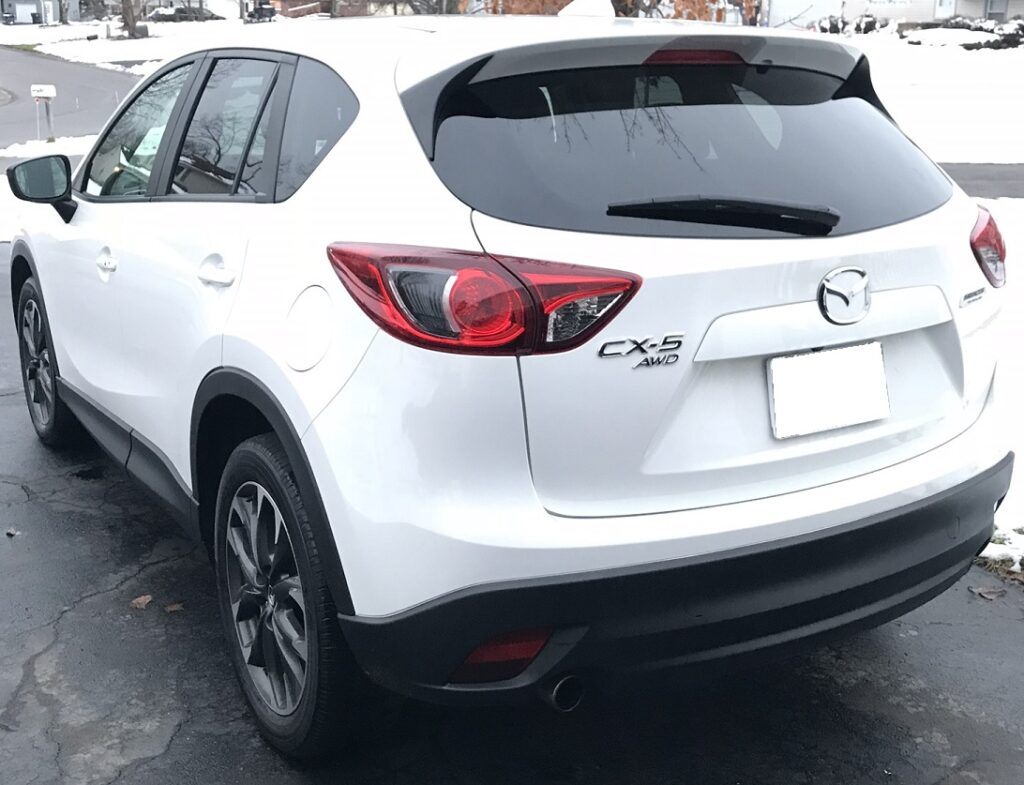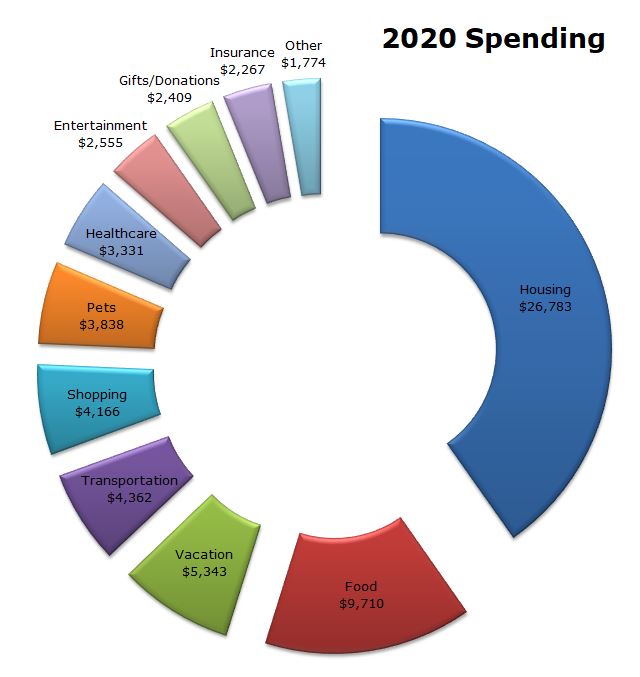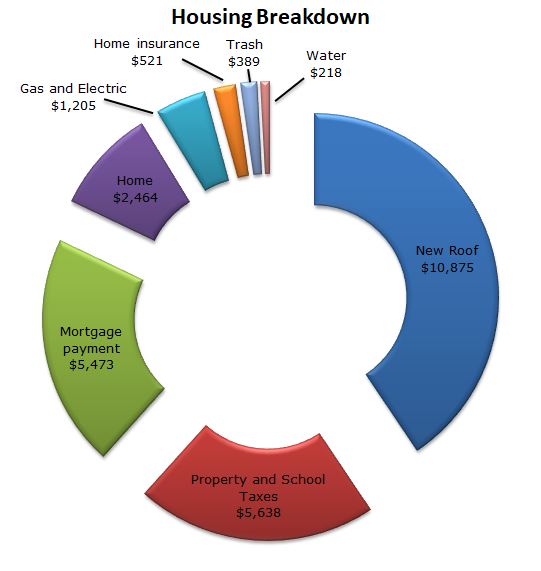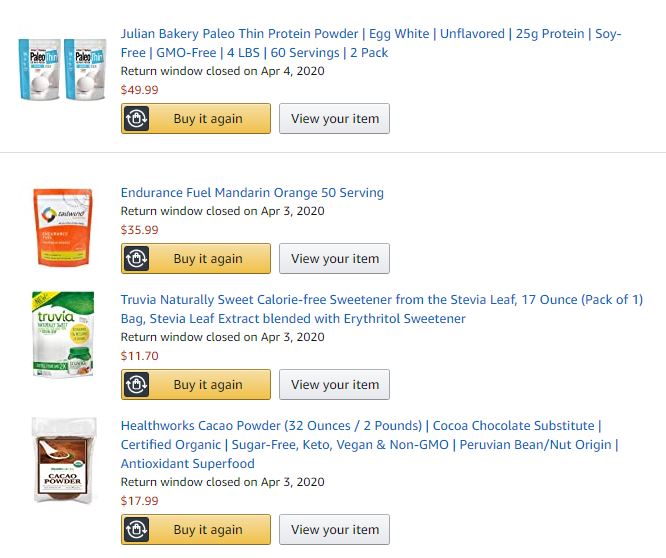BLUF: A key foundational skill is knowing how to track your spending. Tracking spending brings awareness to where the money goes so you can cut out the waste. Understanding your annual spending is also necessary to know how much money you need in retirement.
Mrs. MFI and I used to watch a online personal finance show called Til Debt Do Us Part. A guilty pleasure that both helped scare us into being good with our money and also made us feel good that we weren’t in financial situations like these. It was about couples who were in serious debt usually through excessive spending on stuff. The format of the show always includes the participants estimating their monthly spending and current debt levels and then the host reveals what they’re really spending using their statements. Watch until the 7 minute mark and you’ll see an example of that part of the show.
One common theme across every episode of the show is that the participants don’t track their spending and have no idea how much they’re truly spending. This couple had no idea what their monthly spending was and they also under estimated their total debt by $33k!
Television shows like this obviously use the most extreme cases for shock and awe entertainment value but unfortunately this is a pretty common problem. A Mint.com survey in 2020 showed that 65% of people surveyed didn’t know how much they spent last month.
What is Tracking Spending?
The concept of tracking spending is not hard to understand as the name mostly gives it away. You keep track of every dollar that you spend so that you can see where the money goes. A common way would be to record each financial transaction and categorize that transaction.
An example of tracking transactions is shown below from a tool called You Need A Budget (YNAB) which I love and use daily. Each line is a transaction that is then assigned a category. The categories can be whatever you want them to be. They’re just buckets to let you track the different types of spending. This becomes important later when you want to see at a lower level where most of your money is going.
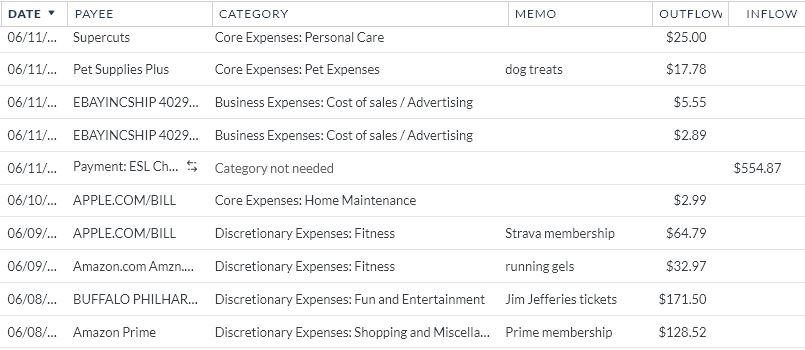
There are many tools available to help with tracking and multiple ways to track spending which we’ll dive into later.
Tracking Spending vs Budgeting
I think it’s an important time to point out that sometimes people talk about tracking spending and budgeting as if they are the same thing. They are NOT!
- Tracking Spending – You spend money without any awareness of how much you could spend. You record the transactions and categorize them after the spending is done.
- Budgeting – You have a plan for how your income will be spent before you actually spend the money. As life happens and money is spent you tweak your budget as needed on a month to month basis to try and keep the overall spending for the year to your plan. A deep dive into budgeting here.
Why is Tracking Spending Important?
There’s a reason that I called tracking spending a foundational skill in personal finance. It is so critically important that you understand where your money goes and unless you track it you really can’t know for sure. According to this Mint.com survey, 65% of Americans had no idea what they spent last month.

People are also really bad at estimating since we’re filled with biases and optimism when it comes to our own actions. We never think we’re spending as much as we do so it’s critical to let the numbers do the talking. Otherwise we’re just guessing.
“What Gets Measured Gets Improved” – Peter Drucker
Peter Drucker said that famous quote many years. In business he was referring to the fact that if you track or measure something in business then you create awareness and you will improve what is being tracked.
Have you ever heard of a business that bought whatever it needed without tracking where the money was being spent on? Of course not unless it was an unsuccessful business. Why would you expect your household to be successful unless you track and understand where you are spending your money? When you track your person spending you create awareness of where the money is going and that will naturally lead to improvement.
At the end of 2018 I did my first annual summary of my spending for the year 2018. I didn’t track anything along the way but it was the first time even trying to see my overall spending and trying to categorize it. In 2019 I did the annual summary and bucketizing after the fact again but wasn’t yet looking for opportunities to reduce the spending significantly. It just seemed too painful to track every transaction.
In early 2020 I found FI and using 2019 data I started to making changes to reduce our spending. In December 2020 I went all in with YNAB tracking all expenses and truly budgeting for the first time. The results below speak for themselves. You can see what awareness of spending from tracking coupled with action can do for reducing your expenses. If you’re interested in the details of how I chopped down spending you can read about it here.



Spending is the Easiest to Control

A simple formula for personal finance is savings = income – expenses. Most people they can’t make an instant change today and impact their income in a meaningful way tomorrow. As much as we’d love to give ourselves a raise when needed that’s rarely in our control. What we spend, however, is something that is in our control.
Tracking spending allows us to look at the areas where we might be wasting money and see what can be done to save money in those areas. Housing, transportation and food are the “big 3” expense categories for most people but all areas should be explored. Even saving $20 a week is still $1,000 a year.
FI Number Requires Annual Spending
This wouldn’t be an FI blog post without talking about the magic FI number which is based off 25 times your annual expenses (the 4% rule of thumb). What’s the only variable in that magical equation? Annual expenses? What does tracking spending tell you? Your annual expenses today.
Now, a true FI number is 25 * annual retirement expenses but until you get closer to FI enough to understand those retirement details you use your current annual expenses as your northern star.
The other magical thing to think about is your FI number in reverse. What do I mean by that? Since your annual expenses sets your FI number, ever dollar you reduce in annual spending saves $25 that you need in investible accounts. Every $1,000 in annual spending saved reduces your FI number by $25,000! How easy might it be to cut $20 a week in spending versus how hard is it to save $25,000?
For example, if my in 2018 cost $81,000. If that was my consistent spending then my FI number would be $81,000 * 25 = $2,025,000! Two million! My projected annual expenses for 2021 will be $52,000. Carried forward our FI number has dropped to $52,000*25 = $1,300,000. Wow. Making a number of life changes has dropped the amount we need to save by $725,000. That’s a lot of years of work time saved.
Laying the Budgeting Foundation
As previously mentioned, tracking expenses is not budgeting. However, it’s pretty hard to come up with a reasonable starting point for a budget unless you have general idea of how much money flows out of your wallet on average each month. Is $5,000 total a month reasonable? Is $500 a month reasonable to spend on food? $1,000? Your guess is as good as mine since everyone is different. Track spending first, then move onto budgeting.
How to Track Spending
Alright, enough already about why you probably should be tracking your spending and onto the real meat of the discussion. How do you actually track your spending?
Well, there are a variety of ways to track spending and you can choose the one that fits the amount of effort you want to spend, the level of detail you want and your personal lifestyle. I’ll go through a few common ones that I’ve used personally or have heard about others using.
For each method there are a variety of tools at your disposal to make the job easier. The good news? It’s never been easier to track your spending with so many great software tools that connect automatically with banks and credit cards.
Track At the Summary Level (Monthly / Yearly)
This is the “keep it simple” method to start. The goal here is to baby step you into the tracking spending without overwhelming you. After all, if you quit because it’s too much work then that’s not very helpful. If you’ve never tracked your spending before I’d recommend that you start here.
All we’re going to do is understand how much money you’ve spent on a monthly and yearly level using summaries from each account. You won’t necessarily understand how you’re spending the money yet, just how much. However, the hope here is that it’s easy and eye opening enough to make you want to dig for more answers.
- Make a list of all the ways that you spend money – Checking accounts and credit card that you use.
- Use online summary tools for each account to note how much you spent using that account or card last month.
- Add up the spending for each account. For bank accounts be careful to ignore transactions where money was just moved from one account to another. You may want to use a spreadsheet to keep track of the spending for each account for that month. After all, you’re going to keep doing this, right?
- Look at the data and see what it tells you. Are you spending more than you make? If you multiply that monthly amount by 12 how much would you spend a year? Unfortunately a single month will be a distorted view since everyone’s expenses has peaks and valleys.
- Continue this to see what you’ve spent for the last 6 months. That’s generally a much better way to get a monthly average.
- Jump back and pull the summary data from the previous full year and see what you spent last year. Credit cards often have online spending reports that can be pulled like the one from Citibank. The categories aren’t always the most useful but again the focus is the overall number. Does your annual spending surprise you compared with your annual take home pay?
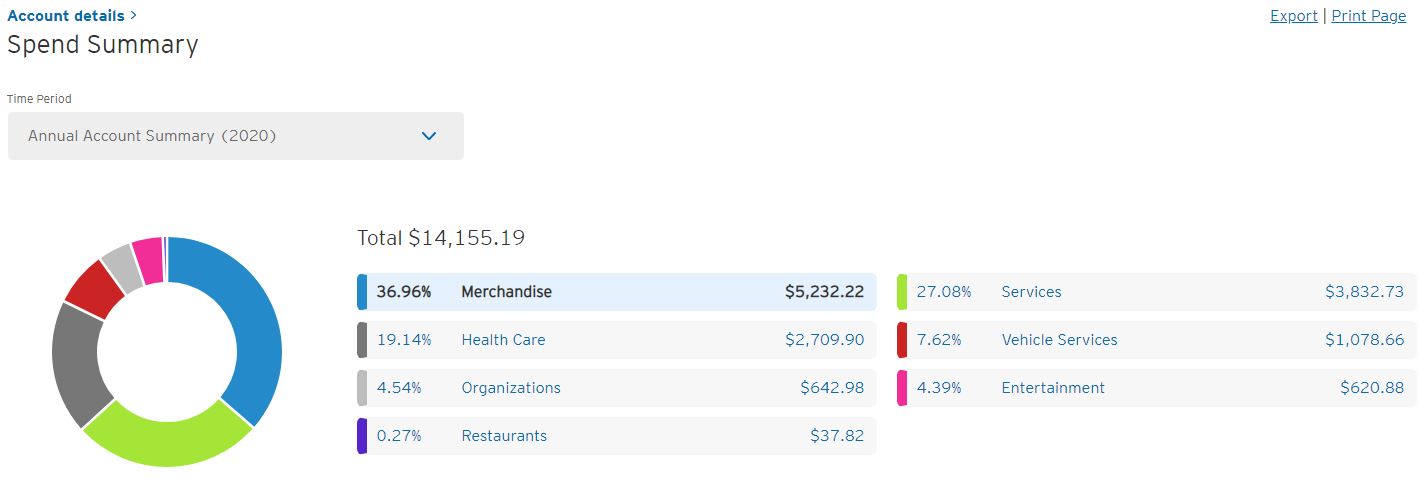
Note: If your income is heavily cash based like a waitress or bartender and you don’t deposit that money directly into a bank account then it might be tricky to understand your spending in hindsight. If you don’t want to deposit the money then you’ll need to record each day how much cash income you’re making. That way you can check at month end how much cash you still have remaining on hand to determine what you’ve spent.
Track Every Transaction (What I use)
This is the most detailed method but with the tools available today it’s very easy to track and categorize each expense. It might take half a day or day to learn the tool and get it setup but after that it’s easy. As previously mentioned, I use YNAB and I probably spend 15 minutes a week dealing with transactions and categorizing them.
Choosing Categories
Using this method you’re going to keep track of every spending transaction and you’re going to put each transaction into a category or spending “bucket”. That way, you can measure each bucket at the end of every month or year and know what you’ve spent.
You have the flexibility to make as many or as few categories as you want. Just know that if you’ll have fewer categories you’ll have less granularity for your data in understand where the money is really going. For example, you could have the following categories as a very basic system:
- Housing (Mortgage, Rent, Maintenance costs, related insurance)
- Transportation (Car payments, car insurance, maintenance costs, gas, tolls, ride share)
- Food (Groceries, eating out, alcohol, work lunches)
- Everything else (Vacation, shopping, charity, personal care, entertainment, etc)
You could choose these 4 very high level categories of housing, transportation, food and everything else. It’s certainly better than nothing but it might not give you all the insights you want.
As you can see by the categories in parenthesis you can certainly break these high level categories down into many more categories. The key here is to just pick some categories and start tracking. There’s no perfect compliment and over time you’ll change what’s important for you to track.
What Categories I Use:
I use three high level groups for my categories called Core, Discretionary and Business expenses. Core expenses are everything I have to pay each month. If I lost my job I wouldn’t look at the core expenses for places to cut cost. That’s not to say that I couldn’t find something to cut, but I don’t plan financially on being able to cut here.
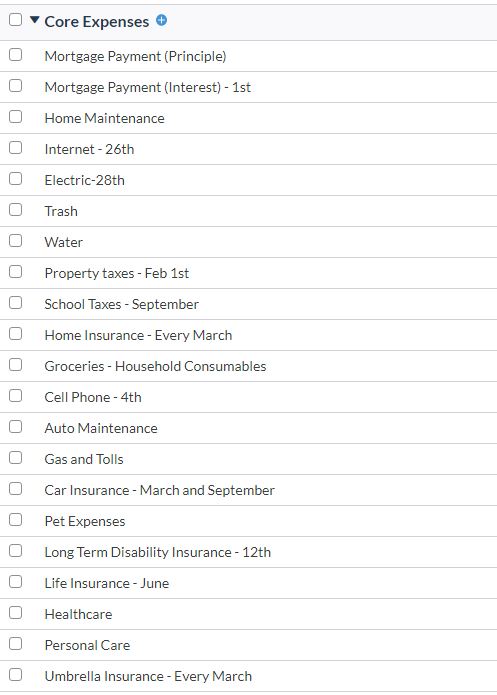
Discretionary expenses are the extra things in my life that I could partially or completely cut if I lost my job or something else bad happened. Now, this is a very individual choice for what goes in core versus discretionary. Don’t judge me for having charity in my discretionary expenses.
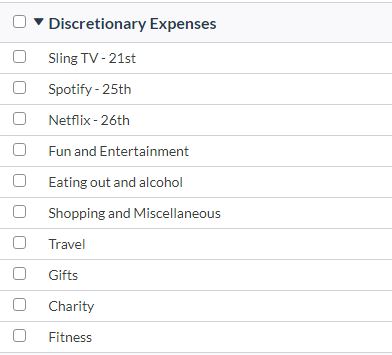
Why track core and discretionary expenses separately? Well it conveniently gives me the data that I need to calculate the size of my emergency fund.
Adding Transactions
This is very easy because I don’t have to do anything usually with YNAB. All of my accounts are in YNAB and linked to my financial institutions. Whenever there’s a new transaction to do something with a dot will appear next to the account name and those transactions are imported. The software makes a pretty good guess at the categories most of the time but if it doesn’t know it says “This needs a category”.

Bob Johnson Toyota in this case was getting my car serviced so I selected the Auto Maintenance category in my Core Expenses.
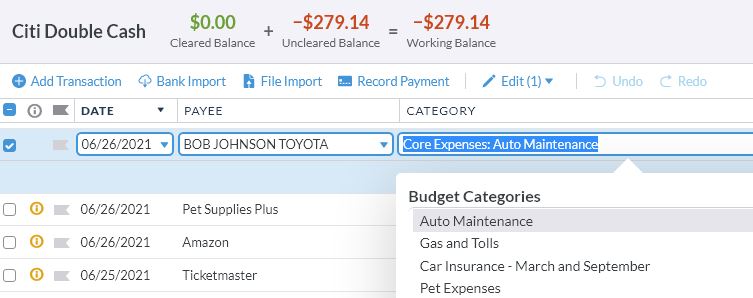
Seeing Where the Money Went
By tracking spending at the transaction level it becomes very clear to see month to month and year to date exactly where your money is going. For example here is my June spending on Core Expenses.
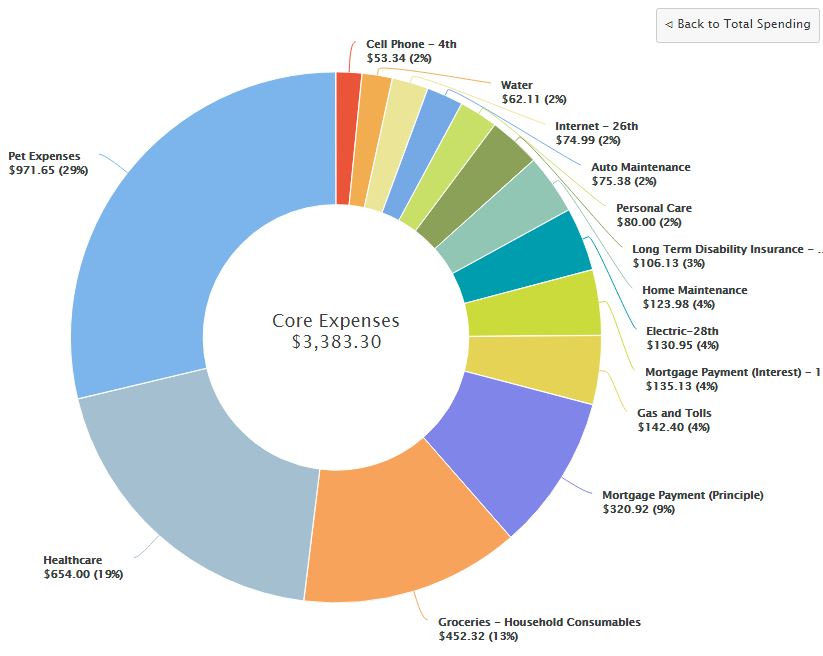
We adopted a dog in June and with all the accompanying medical care and “stuff” that comes with a new pooch that was a high spending month. Same with healthcare as I had a procedure and accompanying appointments. If we took these two areas and multiplied by 12 months we’d get $12k of pet expenses and $8k of healthcare! Ouch. But that’s not really the case because monthly spikes happen and they aren’t consistent. Let’s look for January through June of 2021 to get a better idea.
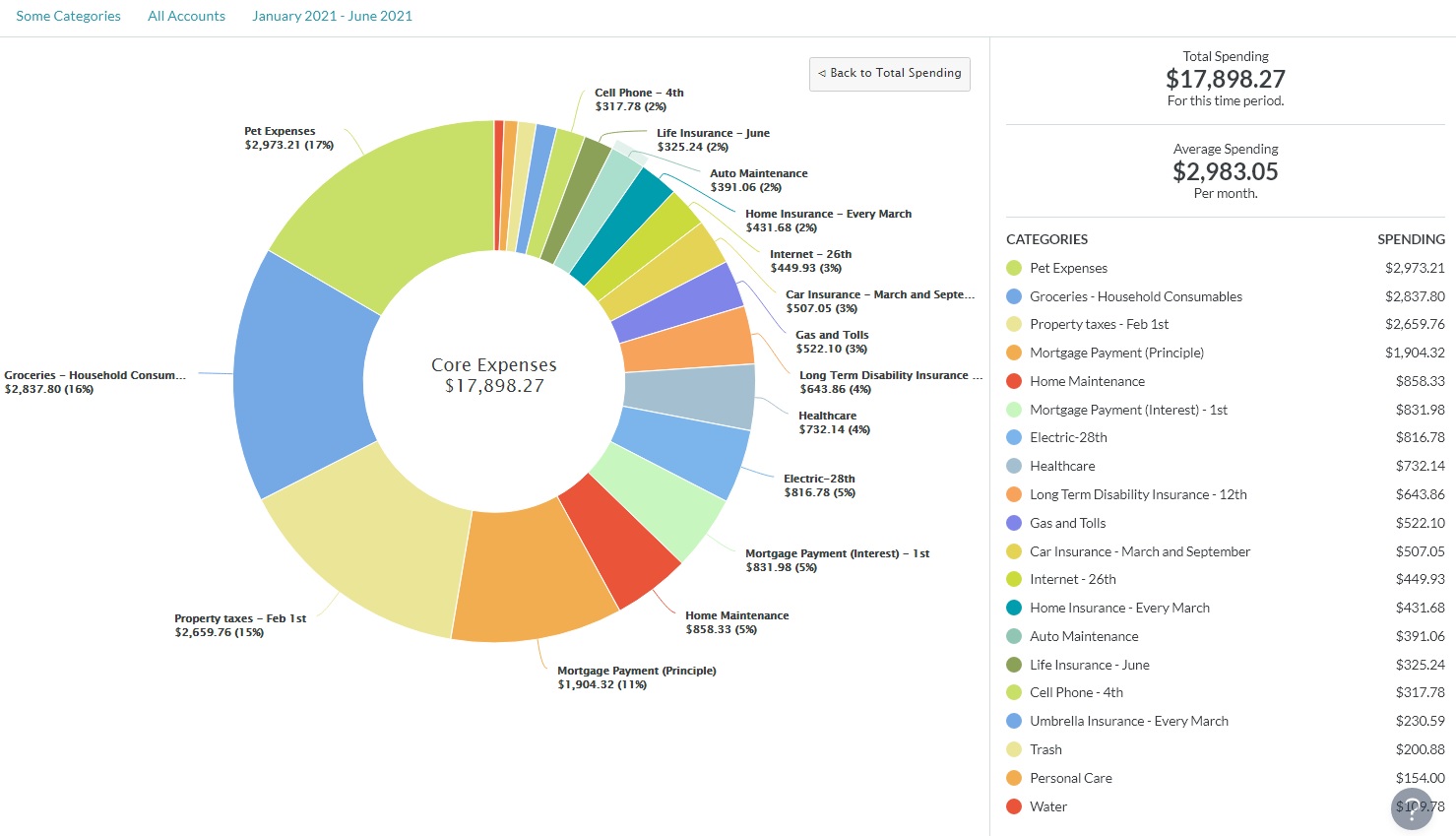
When you look at 6 months of data the averages become more normal. We lost our dog to cancer in March so there were still a lot unusually high pet expense months but it’s $3k for the first half of the year. Barring anything catastrophic happening we’ll be able to keep things within the $3,500 pet expense budget for the year.
A similar story for healthcare. June was heavy but only $732 was spent from Jan-June or $106/mo.
Other Tools
I’m partial to YNAB because it’s just worked very well and I also use it for budgeting. But it does cost $84/year and while I think I more than save that much by using it in money and time that’s a turn off for some people.
- Mint.com – Now owned by Intuit, the same company as TurboTax is a free tool for tracking expenses. It can also link to online accounts and import transactions. I tried it years ago and was frustrated in not getting my transactions and balances to match up. I know plenty of others that use it successfully though.
- Spreadsheet – Old school but it works. It is a lot more work to do everything from manually entering transactions to summarizing the data but it is an option.
- Paper – Even more old school with all the downsides of a spreadsheet plus you’ll have to manually calculate spending and averages.
- Other – There are many other tools out there. Some are called “budgeting” apps but I’m not sure how well they do in that regard. I’ll let you read reviews and decide for yourself.
Other Benefits of Tracking Spending
There are a couple of side benefits worth noting by tracking spending in a detailed way.
- More conscious spender – When you see real time how much money is going out the door it makes you more hyper aware of your spending. That in turn makes me think about purchases more carefully before I made them.
- Awareness of fraud – By seeing every transaction that hits your accounts on a daily basis you will spot unusual transactions right away.
- Easy to see all transactions – Instead of logging into each online account the data is all there right on one dashboard. I don’t have to go hunting down data figuring out which card and which month I spent something.
- Peace of Mind – I’ve found that I have more peace of mind when I feel like I have the full spending picture.
Action Steps:
- If you want to tiptoe in tracking spending:
- Make a list of all your spending accounts and then look up what you spent last month using online summaries. How does that compare with what you thought? To your income?
- Repeat that for the last 6 months. If you really want to dig in look up summary spending for the previous year.
- If you want to jump all in:
- Research the tracking tools like YNAB, Mint.com or others and pick one. I’m partial to YNAB which does have a free 35 day trial. If you use my referral link we each get a an extra free month of YNAB.
- Make a list of categories to track. DON’T get paralyzed here! Take a stab at it thinking through your spending and run with it.
- Track! Things will be slow at first with any tool but you’ll get faster and more efficient.
- Don’t sweat the small stuff – some people obsess over where every penny goes. Don’t stress over every dollar. We’re looking to find and fix big spending issues, not little ones.
- Move on to budgeting!
Like the content? Click here to subscribe to the e-mail list and have the articles delivered to your inbox.




